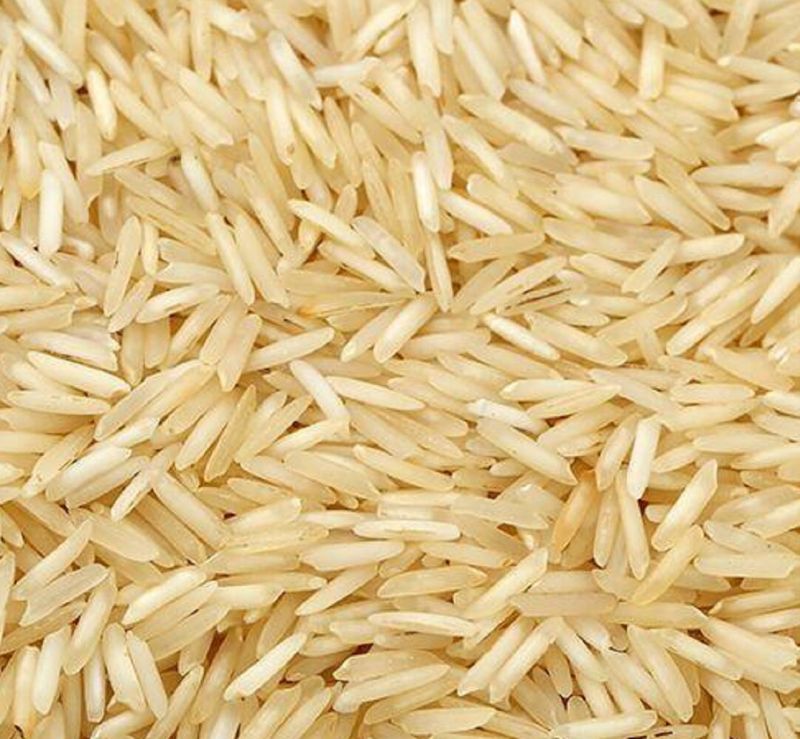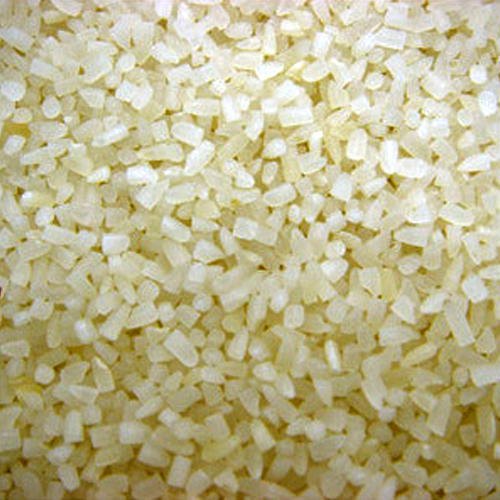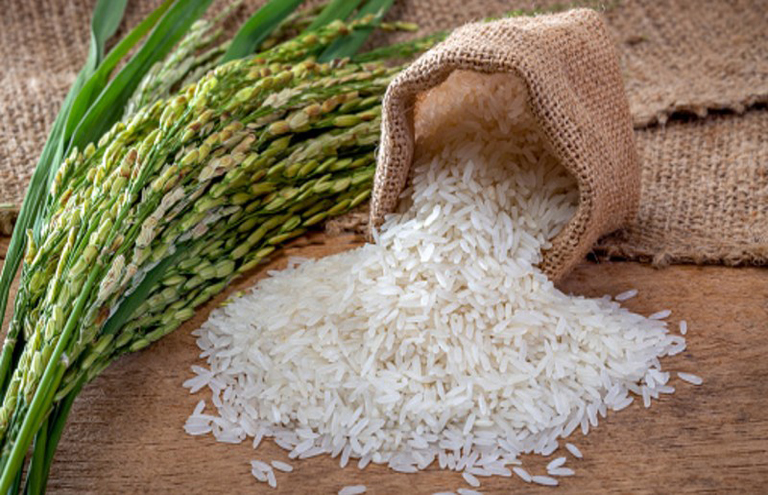- View Mobile Number
Amrutharajexportandimport@gmail.com
Rice
Leading Manufacturers, Exporters, Wholesaler, Retailer and Trader of basmati rice, Broken Rice and non basmati rice from Visakhapatnam.
| Business Type | Exporter, Supplier, Trader |
| Country of Origin | India |
| Shelf Life | 6months |
| Packaging Type | Pp Bags |
| Variety | Long Grain |
| Application | Cooking |
| Texture | Soft |
| Cultivation Type | Natural |
| Type | traditional basmati, 1121, pusa basmati |
| Size | 7mm - 8.2mm |
| Color | white/creamy white |
| Payment Terms | L/C, D/A, D/P, T/T, Western Union, Other |
| Packaging Details | Packaging Types for Basmati Rice: 1.Polypropylene (PP) Bags: Sizes: 1 kg, 5 kg, 10 kg, 25 kg, 50 kg. Features: Durable, moisture-resistant, and suitable for both retail and bulk packaging. Often includes inner liners to prevent moisture ingress. 2.HDPE Bags (High-Density Polyethylene): Sizes: 25 kg, 50 kg. Features: Strong and moisture-resistant, used for bulk packaging and transportation. 3.Vacuum-Sealed Pouches: Sizes: 500 g, 1 kg, 5 kg. Features: Airtight packaging that helps preserve the freshness and extend shelf life. Ideal for retail packaging. 4.Carton Boxes: Sizes: 10 kg, 20 kg, 25 kg. Features: Used for bulk packaging, especially for export. Often contains inner bags to protect the rice. 5.Tin Containers: Sizes: 5 kg, 10 kg. Features: Airtight and moisture-resistant, tins are used for premium packaging to maintain the quality and flavor of the rice. |
Preferred Buyer From
| Location | India ( Andhra Pradesh only) & All other countries |
Basmati rice is a highly aromatic and long-grain variety of rice known for its distinctive fragrance, fluffy texture, and delicate flavor. It is primarily grown in the Himalayan region of India and Pakistan and is widely used in various dishes, including biryanis and pilafs.
Product Name: Basmati Rice Scientific Name: Oryza sativa Description:Basmati rice grains are long and slender, with a unique aroma reminiscent of pandan leaves. The rice has a fluffy texture when cooked, and the grains remain separate and non-sticky. It is often aged to enhance its flavor and texture.
Uses:- Culinary: Used in a variety of dishes, including biryani, pilaf, fried rice, and as a side dish. Basmati rice is preferred for its ability to absorb flavors and remain separate after cooking.
- Confectionery: Used in sweets like kheer and puddings.
- Processing: Used in making rice flour and rice-based snacks.
- Calories: 365 kcal
- Protein: 7.5 g
- Fat: 0.9 g
- Carbohydrates: 80 g
- Dietary Fiber: 0.9 g
- Iron: 0.8 mg
- Calcium: 28 mg
- Vitamin B1 (Thiamine): 0.07 mg
Basmati rice is graded based on its quality, length, and aroma. Common grades include:
- Pusa Basmati 1121: Known for its extra-long grain and aroma.
- Sona Masoori Basmati: Medium to long grain, with a mild aroma.
- Traditional Basmati: Older varieties with a strong aroma and long grain.
- Organic Basmati: Grown without synthetic pesticides or fertilizers.
- Bags: 1 kg, 5 kg, 10 kg, 25 kg, 50 kg, or as per buyer’s requirement.
- Type: Polypropylene (PP) Bags, HDPE Bags, Vacuum-Sealed Pouches, or Carton Boxes.
- Customized Packaging: Available with branding and specific buyer requirements.
- Export: Basmati rice is exported worldwide, especially to the Middle East, Europe, and North America.
- Domestic Market: Widely used in Indian households and restaurants.
- India Gate
- Daawat
- Patanjali
- Lal Qilla
- Fortune
| Business Type | Exporter, Supplier, Trader |
| Country of Origin | India,India |
| Packaging Type | Plastic Bags |
| Variety | Organic |
| Color | White |
| Texture | Hard |
| Cultivation Type | Common |
| Speciality | 100% Broken |
| Size | 2-4MM |
| Payment Terms | T/T |
| Packaging Details | Packaging Details for Broken Rice: Bulk Packaging: PP (Polypropylene) Bags: Capacity: 25 kg, 50 kg. Material: Strong, durable woven polypropylene (PP) bags. Labeling: Includes product type (Broken Rice), percentage of broken grains (e.g., 25% Broken), weight, batch number, manufacturing/expiry date, and origin. Jute Bags: Capacity: 25 kg, 50 kg. Material: Eco-friendly, breathable jute. Labeling: Product name, broken percentage, weight, and other details. Retail Packaging: Smaller Bags/Pouches: Material: Food-grade plastic or laminated pouches. Capacity per Pack: 1 kg, 2 kg, 5 kg, 10 kg. Labeling: Nutritional information, product details, expiry date, and custom branding. Container Load: 20 ft Container: Can hold approximately 24-26 metric tons of broken rice. 40 ft Container: Can hold approximately 48-52 metric tons. Custom Packaging: Custom Sizes: Available as per buyer needs. Private Labeling: Custom branding and logos for retail and bulk buyers |
Preferred Buyer From
| Location | India ( Andhra Pradesh only) & All other countries |
Varieties:
- White Broken Rice: Non-Basmati and Basmati varieties available.
- Parboiled Broken Rice: Partially boiled before milling.
- Brown Broken Rice: Whole grain broken rice.
Broken Percentage: Typically 5%, 10%, 25%, 50%, or 100% broken based on customer requirements.
Color: White, off-white, or light brown (based on processing).
Grain Size: Small fragments (less than ¾ of the whole grain).
Moisture Content: 12-14%
Usage: Primarily used in food processing, animal feed, brewing, and for low-cost rice dishes.
Origin: India (Andhra Pradesh, Tamil Nadu, West Bengal, Chhattisgarh)
Nutritional Content:
- Good source of carbohydrates.
- Low in fat and fiber.
- Protein content varies depending on the variety.
Applications:
- Human consumption (porridge, snacks, rice flour).
- Brewing (for beer and alcohol production).
- Animal feed.
- Industrial uses (cosmetics, pharmaceuticals).
| Business Type | Manufacturer, Exporter, Supplier, Retailer, Trader |
| Country of Origin | India |
| Shelf Life | 6 Months |
| Packaging Type | PP Bags |
| Variety | Long Grain |
| Usage/Application | Cooking |
| Color | White,white or palecream |
| Surface Finishing | Partial Polished |
| Texture | Soft |
| Cultivation Type | Organic |
| Size | 6mm - 7mm |
| Type | sona masoori, PR11/14 Rice |
| Payment Terms | L/C, D/A, D/P, T/T |
| Packaging Details | Packaging Types for Non-Basmati Rice: 1.Polypropylene (PP) Bags: Sizes: 5 kg, 10 kg, 25 kg, 50 kg. Features: Strong, durable, and moisture-resistant. These bags are commonly used for both retail and bulk packaging. They may also include inner liners to provide extra protection against moisture. 2.HDPE Bags (High-Density Polyethylene): Sizes: 10 kg, 25 kg, 50 kg. Features: Highly durable and tear-resistant, these bags offer protection from moisture, making them ideal for large-scale storage and transport. 3.Jute Bags: Sizes: 25 kg, 50 kg. Features: Eco-friendly and breathable, jute bags are commonly used for bulk packaging, especially for export markets. They are biodegradable and offer traditional packaging appeal. 4.Laminated Pouches: Sizes: 1 kg, 5 kg, 10 kg. Features: Airtight, resealable, and often used for retail packaging. Laminated pouches preserve freshness and are designed to be consumer-friendly with easy handling. 5.Non-Woven Fabric Bags: Sizes: 5 kg, 10 kg, 25 kg. Features: Lightweight and environmentally friendly, these bags are reusable and offer a more premium feel. They are becoming increasingly popular for retail packaging. 6.Bulk Containers: Sizes: Custom sizes depending on the buyer’s requirements. Features: Used for industrial or large-scale orders, ensuring safe and efficient transportation. These containers are typically moisture-proof and durable. Packaging Features: Sealed for Freshness: Helps maintain the quality of the rice during storage and transport. Branded Packaging: Often includes branding, nutritional information, and usage instructions. Transparent Windows (in Laminated Pouches): Allows consumers to see the product inside. Customizable Packaging: Available for specific buyer needs, including private labeling. |
Preferred Buyer From
| Location | India ( Andhra Pradesh only) & All other countries |
- Sona Masoori: Medium-grain rice, widely used in South India for daily cooking.
- IR 64: Long-grain rice, commonly used for making plain rice, biryanis, and fried rice.
- Parboiled Rice: Rice that has been partially boiled in the husk, making it more nutritious.
- Kolam: Small to medium-grain rice, soft in texture, often used in Maharashtra.
- Ponni: Short-grain rice popular in Tamil Nadu, particularly used for idli and dosa batters.
- Swarna: Medium-grain rice, widely consumed in West Bengal and Bihar.
- Gobindobhog: Short-grain, aromatic rice from West Bengal, used for traditional dishes.
Non-Basmati rice varieties are known for their versatility and are used in a wide range of culinary applications. They come in various grain lengths and textures, with some being starchy and sticky, while others remain fluffy and separate after cooking. Non-Basmati rice is typically more affordable than Basmati and is grown in many regions across India.
Uses:- Culinary: Used for daily meals, including steamed rice, rice pilaf, fried rice, and traditional dishes like idli, dosa, and biryani.
- Processed Foods: Used in snacks, breakfast cereals, and rice-based products.
- Flour: Ground into rice flour for making various Indian snacks and sweets.
- Calories: 130-360 kcal (varies by type)
- Protein: 2-8 g
- Fat: 0.3-1.5 g
- Carbohydrates: 28-80 g
- Dietary Fiber: 0.2-3 g
- Iron: 1-3 mg
- Calcium: 5-10 mg
- Grain Length: Short, medium, or long.
- Color: White, brown, red, depending on the type.
- Moisture Content: Max 14%
- Broken Grains: 5%, 10%, 25%, 50%, depending on the grade.
- Polishing: Single polished, double polished, silky polished.
- Bags: 5 kg, 10 kg, 25 kg, 50 kg, or as per buyer’s requirement.
- Type: Jute Bags, Polypropylene (PP) Bags, HDPE Bags, or Laminated Pouches.
- Customized Packaging: Available with branding and specific buyer requirements.
- Export: Widely exported to countries in Africa, the Middle East, and Southeast Asia.
- Domestic Market: Commonly used in Indian households and by food processors.


